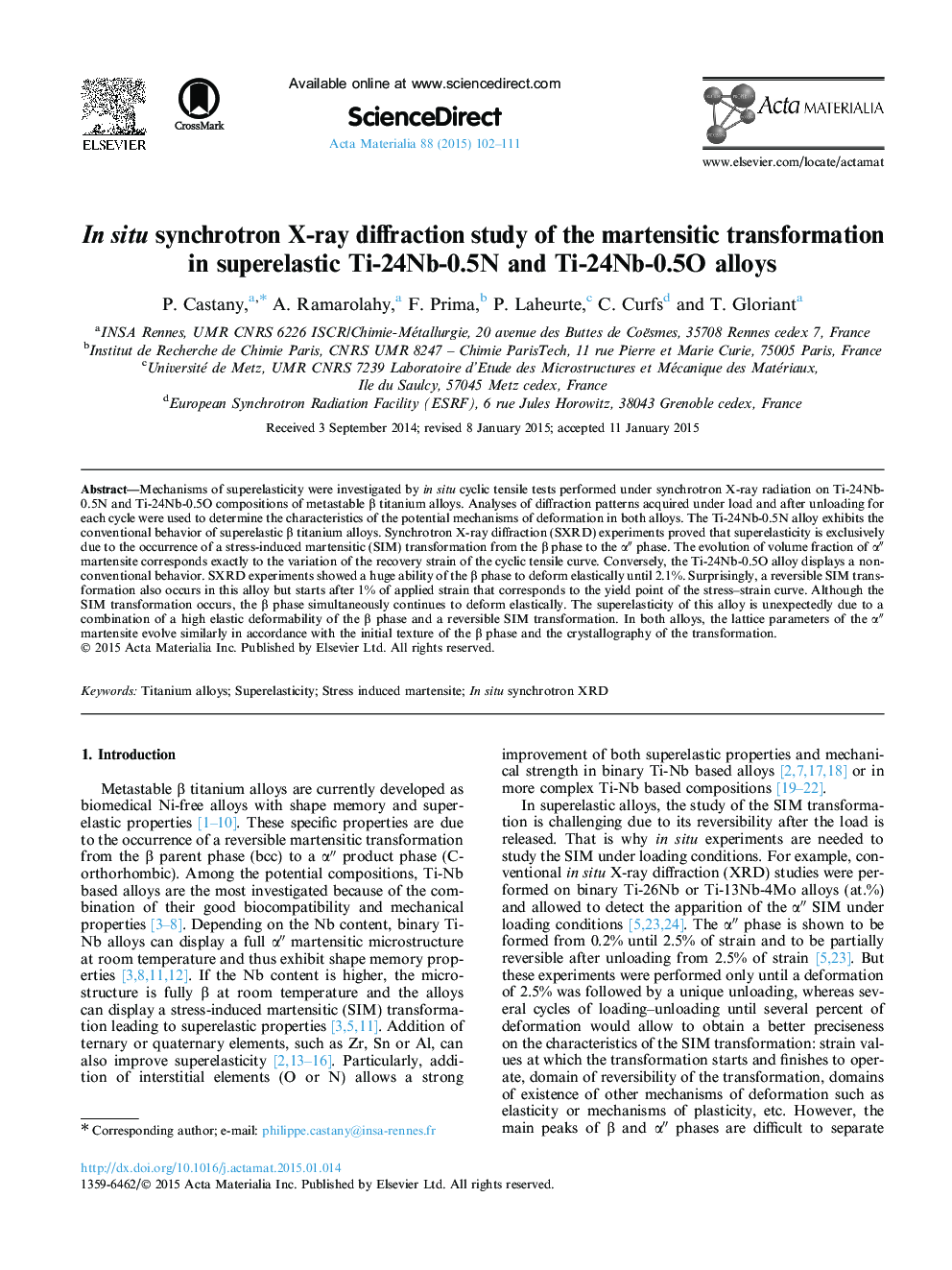| Article ID | Journal | Published Year | Pages | File Type |
|---|---|---|---|---|
| 7880316 | Acta Materialia | 2015 | 10 Pages |
Abstract
Mechanisms of superelasticity were investigated by in situ cyclic tensile tests performed under synchrotron X-ray radiation on Ti-24Nb-0.5N and Ti-24Nb-0.5O compositions of metastable β titanium alloys. Analyses of diffraction patterns acquired under load and after unloading for each cycle were used to determine the characteristics of the potential mechanisms of deformation in both alloys. The Ti-24Nb-0.5N alloy exhibits the conventional behavior of superelastic β titanium alloys. Synchrotron X-ray diffraction (SXRD) experiments proved that superelasticity is exclusively due to the occurrence of a stress-induced martensitic (SIM) transformation from the β phase to the αⳠphase. The evolution of volume fraction of αⳠmartensite corresponds exactly to the variation of the recovery strain of the cyclic tensile curve. Conversely, the Ti-24Nb-0.5O alloy displays a non-conventional behavior. SXRD experiments showed a huge ability of the β phase to deform elastically until 2.1%. Surprisingly, a reversible SIM transformation also occurs in this alloy but starts after 1% of applied strain that corresponds to the yield point of the stress-strain curve. Although the SIM transformation occurs, the β phase simultaneously continues to deform elastically. The superelasticity of this alloy is unexpectedly due to a combination of a high elastic deformability of the β phase and a reversible SIM transformation. In both alloys, the lattice parameters of the αⳠmartensite evolve similarly in accordance with the initial texture of the β phase and the crystallography of the transformation.
Related Topics
Physical Sciences and Engineering
Materials Science
Ceramics and Composites
Authors
P. Castany, A. Ramarolahy, F. Prima, P. Laheurte, C. Curfs, T. Gloriant,
